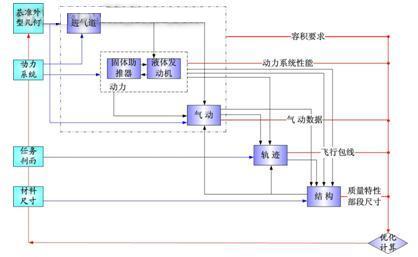Case 1: Aerospace Technology Integration PERA has the industry's common technology, can achieve functional turnkey, and then customized services according to the characteristics of different enterprises. The project is based on the AIE module under PERA, which utilizes AIE's mature geometric model processing and grid processing techniques. At the same time, the AIE was deeply developed and satisfies the finite element general pre- and post-processing requirements of the customer's rapid automatic simplification of the model and the visualization of the In-house solver. For a complete aircraft model, from the geometric model import to the finite element model generation, it only takes a few days to complete, at least a month or more before. And the solution input file of the solver can be automatically generated to avoid errors. Among them, the automatic simplification of the model and the automatic assignment of geometric features are unique, solving the technical problem that the geometric model in the aircraft industry is simplified into a finite element model. Case 2: Multidisciplinary Optimization of Aircraft Aerospace products are highly complex in structure and often involve a variety of disciplines. These typical characteristics determine the difficulty of aerospace product development. For example, a design institute is mainly engaged in the research and design of aircraft and other technologies. The overall design of the aircraft involves many disciplines such as aerodynamics, power, structure, heat prevention, control and ballistics, and there is a strong interdisciplinary relationship. affect each other. In the design, local changes in these disciplines will cause system-wide changes. Therefore, it is necessary to apply the overall integrated design concept, taking full account of aerodynamics, aerodynamics, power, structural size/quality, control, flight performance and other subsystems. The interaction of the various components, while coordinating the work of the various components, for multidisciplinary design optimization. Multidisciplinary design optimization environment is built through PERA process integration, optimization, and distributed computing resource management. Use C/C++, Fortran, Matlab and other tools to develop low-precision discipline modules, and use commercial software such as Fluent and ANSYS to develop medium-precision discipline modules. The PERA system is used to integrate the discipline modules and form a multidisciplinary optimization design process. Finally, the DOE and optimization algorithms are used to design the aircraft program parameters, and different types of aircraft design optimization processes can be quickly implemented. Case 3: Multidisciplinary Optimization of Electronic Products CAE is a very important part of the electronics industry, but the electronics industry has its own characteristics. Unlike the aerospace industry, the division of labor is very detailed. The electronics industry is dominated by CAD design analysis and even experimentation. Personal experience plays a leading role, but it is urgent. Tools such as a co-simulation platform are needed to improve the level of design simulation. For example, in the development practice of electronic products, a variety of CAD software, as well as various CAE software such as structure, fluid, electromagnetic, etc., have been developed. In order to improve the design and simulation level of electronic products, it is necessary to integrate these R&D technologies. Multidisciplinary collaborative optimization. The enterprise-level collaborative simulation platform PERA has powerful multi-disciplinary optimization function. It establishes a collaborative engineering environment with electronic products as the application object through PERA, and establishes a bridge of information and data exchange between heterogeneous computing software and self-developed models to realize information. Integrate with functions, accelerate process reengineering, conduct multidisciplinary optimization design research and application, improve the ability, means and integration level of integrated design, simulation and system integration, and reduce development costs and risks. Previous page next page
Aerospace companies have many different software technologies. If the enterprise's own software technology cannot be integrated, it will not be able to achieve an enterprise-level co-simulation platform. For example, an aircraft design institute has a finite element solver program dedicated to the overall or conceptual design of the aircraft, but does not support complex finite element models. It cannot be directly solved by 3D models. The 3D model must be simplified into a wireframe. The model is solved, and the solver does not have a visual finite element pre-processing tool. The input file of the solver is manually created by the staff, so the efficiency is extremely low, the conversion cycle is extremely long, and error-prone. Therefore, there is an urgent need for a fast simplification of the 3D geometric model into a wireframe model and a visual finite element pre-processing tool for rapid analysis. 
Visual pre-processing 
Multidisciplinary design matrix diagram of aircraft 
Task management module schematic